Die Frau ohne Schatten (The Woman without a Shadow) became the third full operatic collaboration between Richard Strauss and Hugo von Hofmannsthal. Premiered on 10 October 1919 at the Vienna State Opera, the work is a complex mixture of operatic and musical elements. Based on a fairytale, the complexity of the libretto inspired Strauss to compose one of his densest scores, packed with intricate leitmotifs and brilliant orchestral colours.
Richard Strauss: Die Frau ohne Schatten, “Trailer-Dresden”
Background

Portrait of Richard Strauss, 1917
Hofmannsthal’s idea of making an opera out of a fairy-tale by Hauff called Das steinerne Herz (The Heart Turning to Stone) originated shortly after the première of Rosenkavalier in 1911. However, they first concentrated on the 1912 version of Ariadne of Naxos, an opera within an opera representing a theatrical hybrid simultaneously exploring the duality of comedy and tragedy.
In 1916, Ariadne underwent major revisions, and work on Die Frau ohne Schatten finally picked up steam. Hofmannsthal thought of Die Frau as their “Zauberflöte,” and Rosenkavalier as their “Figaro.” However, Strauss was still working on his ballet Josephslegende, and a new version of his Alpine Symphony, and Die Frau was finally completed in 1917.
Richard Strauss: Die Frau ohne Schatten, Op. 65, TrV 234 – Act I: Licht überm See (Evelyn Herlitzius, soprano; Sebastian Holecek, baritone; Vienna State Opera Orchestra; Christian Thielemann, cond.)
The Fairy Tale
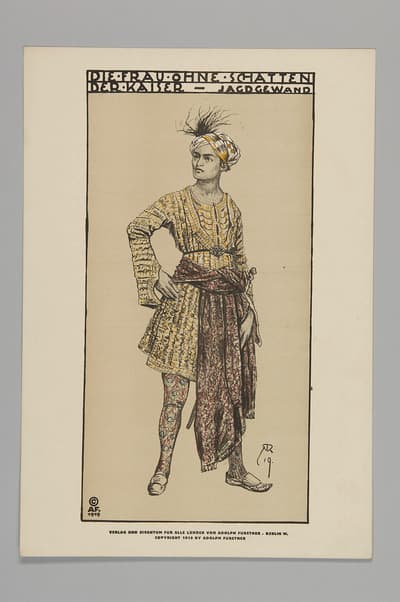
Richard Strauss’ Die Frau ohne Schatten – Emperor
The opera, set in the mythical empire of the South Eastern Islands, features five principal characters. The Emperor (tenor), the Empress (soprano), and her Nurse (mezzo-soprano). We also find Barak, a lowly dyer (bass-baritone) and the Dyer’s Wife (dramatic soprano). There is actually a sixth major character, the King of the Spirit Realm and the father to the Empress named Keikobad.
Keikobad gets the action started, but he never appears on stage. The Empress is actually half human, and she was captured by the Emperor in the form of a gazelle. She took on human shape and the Emperor married her, but she has no shadow, symbolising her inability to bear children. Keikobad decrees that unless the Empress gains a shadow before one year elapses after her human marriage, he will reclaim his daughter and turn the Emperor into stone.
Richard Strauss: Die Frau ohne Schatten, “Excerpt”
Synopsis
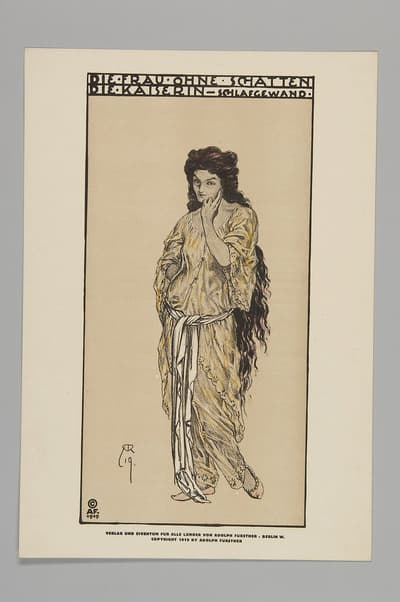
Richard Strauss’ Die Frau ohne Schatten – Empress
The Nurse warns the Empress that she has only three days left. The Emperor announces that he will go on a three-day hunt, and the Empress laments the loss of a talisman that enabled her to change her form. When the voice of a Falcon threatens doom, the Empress implores the Nurse to help her find a shadow. In the humble house of Barak the Dyer, his wife is reluctant to have children, and when her husband goes out, the Nurse and Empress enter in disguise. They convince the Dyer’s Wife to refuse her husband for three days while the visitors act as her servants. The Dyer’s Wife hears the voices of Unborn Children, and Barak returns to find the marriage bed divided.
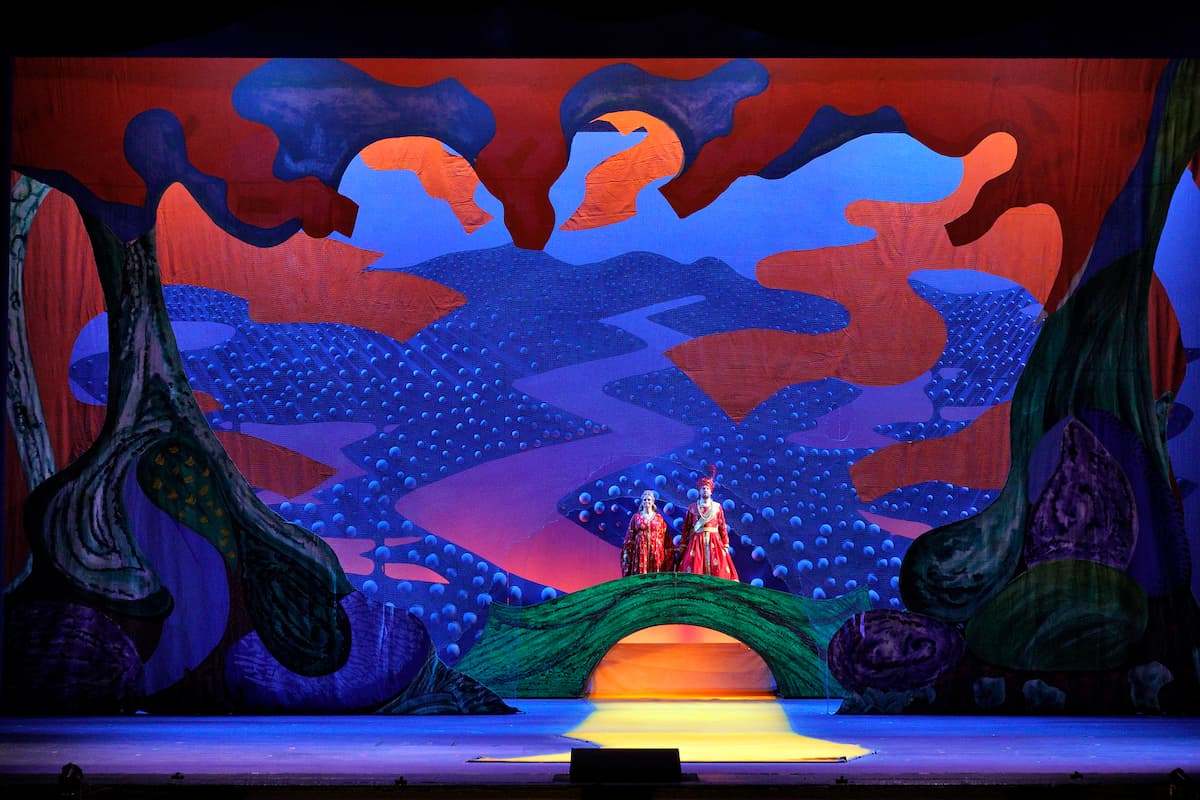
Richard Strauss’ Die Frau ohne Schatten, San Francisco Opera
Act II finds the Empress as a servant in the Dyer’s house, while the Nurse conjures up the apparition of a young man to whom the Wife is attracted. The Empress, however, is troubled. The Emperor, meanwhile, is looking for his wife, who has vowed to remain in three day seclusion. The young man appears again to the Dyer’s Wife, who becomes increasingly anxious, while the Empress is tormented at her sin against Barak. While the Empress begins to realise her humanity, the Dyer’s Wife resolves to relinquish her shadow, which is lost irrevocably.
In the realm of Keikobad, the Dyer’s Wife has become separated from her husband. Barak, meanwhile, is filled with remorse, and a voice urges them to ascend a staircase. Leading to the great temple door, the messenger of Keikobad waits for the boat that will bring the Empress, and he dooms the Nurse to wander in the mortal world. While hearing the cries of Barak and his wife, the Emperor turns to stone. The Empress is torn, but she casts a shadow and the Emperor is freed. The Emperor and Empress, Barak and his wife (who has regained her shadow) sing of their humanity to the praises of the Unborn.
Richard Strauss: Die Frau ohne Schatten, “Vater, dir drohet nichts” (Vienna State Opera Chorus; Vienna State Opera Orchestra; Christian Thielemann, cond.)
The Music
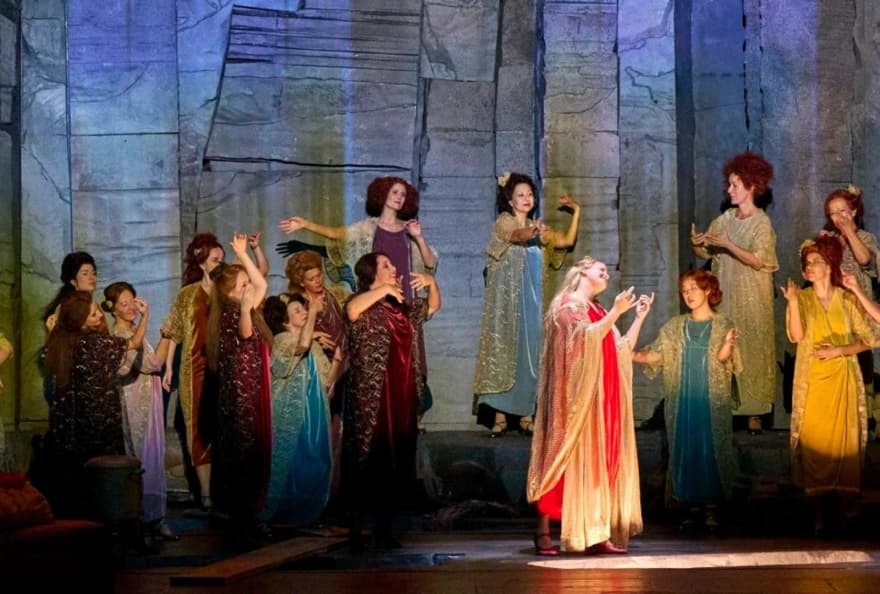
Richard Strauss’ Die Frau ohne Schatten, Vienna State Opera
Die Frau ohne Schatten is one of Strauss’s most complicated and colourful scores, brimming with tonally fractured or curdled leitmotifs. It also contains extended monologues and scenes that revel in advanced polytonal polyphony. “The result,” according to David Murray, “is a hugely expressive orchestral canvas, which carries a few lyrical set-pieces and a great deal of glorified recitative.”
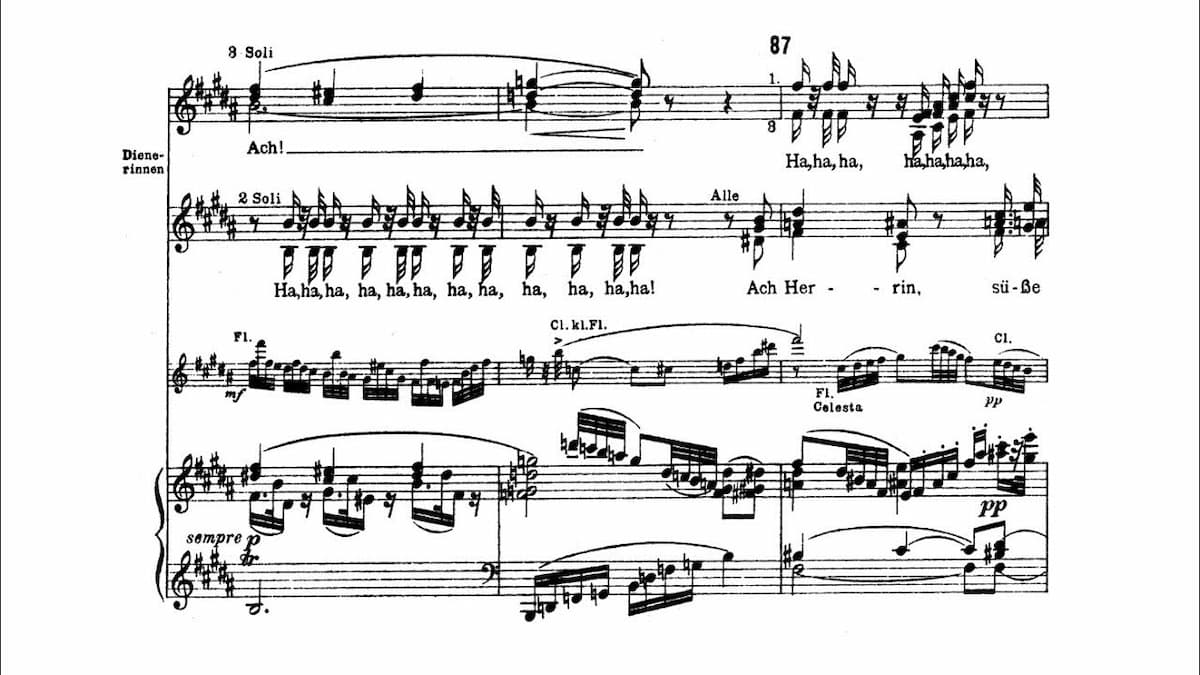
Richard Strauss’ Die Frau ohne Schatten music score
Theatrically, the opera remains a challenge to stage, as it calls for five top soloists in demanding principal roles, first-rate secondary roles, a large orchestra, and elaborate sets and scenic effects. Few opera houses are capable of staging the work. However, as Strauss wrote in 1948, “despite the difficulties of staging, it has succeeded nevertheless and has made a deep impression… and music lovers in particular consider it to be my most important work.”
For more of the best in classical music, sign up for our E-Newsletter
